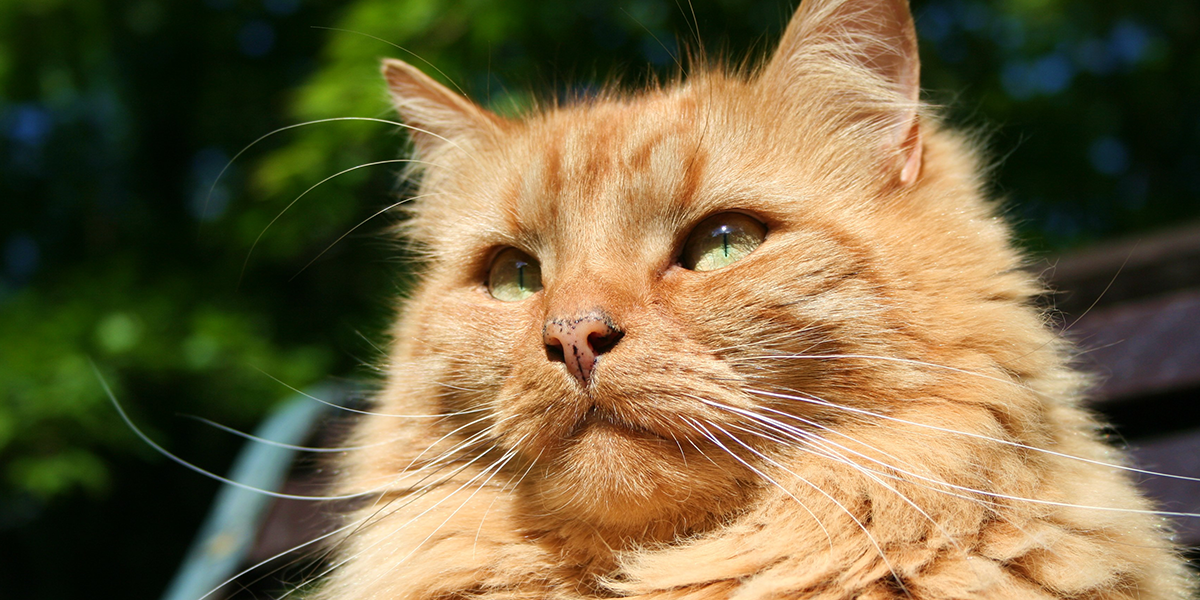Bordetella bronchiseptica (B. bronchiseptica) is a bacterium that can cause disease in a number of animals, and also rarely in humans.
This bacterium can be a cause of upper respiratory disease in cats, but is mainly a problem where cats are kept together in large groups such as rescue shelters and some breeding households. Bordetella bronchiseptica infections can be treated successfully with antibiotics, and for situations where it causes significant ongoing problems, an effective vaccine is available in many countries.
What is Bordetella bronchiseptica
Bordetella bronchiseptica is a bacterium that causes respiratory disease in a number of animals. It is related to Bordetella pertussis and Bordetella parapertussis, which are the cause of ‘whooping cough’ in humans. B. bronchiseptica is a cause of disease in dogs (one of the important causes of ‘kennel cough’), cats, pigs, rabbits and can occasionally cause disease in humans. B. bronchiseptica is therefore classified as a rare zoonosis (disease transmissible from animals to humans).
How is B. bronchiseptica spread?
Cats infected with B. bronchiseptica shed bacteria in saliva and nasal secretions (and in droplets when they sneeze) so direct contact between cats or inhalation of infectious sneeze droplets is an effective means of transmission. Although the bacteria are susceptible to disinfectants, it is likely that they can survive for 1-2 weeks in the environment, so unless kept scrupulously clean, the environment, bedding, feeding bowls, grooming utensils etc may also be sources of infection. B. bronchiseptica can also be spread between dogs and cats. Cats can also remain infected with B. bronchiseptica for many months after clinical signs of infection have subsided, so recovered cats can also be a potential source of infection to others.
What clinical disease does B. bronchiseptica cause in cats?
Infection with B. bronchiseptica in cats usually results in mild sneezing, coughing, nasal and ocular discharge and fever. Signs typically last 7-10 days. However, in occasional cases (especially in young kittens, and with severe stress) infection may be more severe and can sometimes result in life-threatening pneumonia.
The frequency with which B. bronchiseptica causes disease in cats is not well understood. Studies have shown that exposure to the bacterium is relatively common, especially in colony situations (such as rescues and some breeding establishments). However, sub-clinical and mild infections are likely to be common. Pet cats kept on their own or as part of a small group are much less likely to be infected. Most clinical problems arise in colonies where B. bronchiseptica may sometimes be an important part of the upper respiratory infection (URI) complex of diseases.
How is B. bronchiseptica infection diagnosed?
A diagnosis of infection is made by detecting the organism in the laboratory from swabs taken from the pharynx (throat). The organism can be detected by bacterial culture (using specific culture medium) or by PCR (polymerase chain reaction – a molecular technique to detect the genetic material of the organism).
How are B. bronchiseptica infections treated?
Treatment with antibacterial drugs is usually very effective in managing B. bronchiseptica infections. However, the bacteria can be resistant to some antibiotics so in general it is better to carry out sensitivity testing in the laboratory (from bacterial culture) to determine which antibiotics are most effective. In general, treatment with doxycycline (or possibly a fluoroquinolone antibiotic) is likely to be most successful.
If infection is severe, further supportive care and hospitalisation may be required.
How can B. bronchiseptica infections be prevented or controlled?
In most cases, B. bronchiseptica is considered a minor infection and no specific precautions are necessary for most pet cats as the risk of infection and serious disease is low. In shelters and breeding colonies it is important to try to minimise the risk by:
- Keeping cats individually or in small isolated groups
- Maintaining excellent hygiene, with use of appropriate disinfectants
- Isolate any cats showing signs of clinical disease
If B. bronchiseptica is confirmed as a cause of disease and is a persistent or widespread problem, a good and effective vaccine is available in many countries (vaccination is achieved via drops placed in the nose), and this can be a helpful part of disease control. However, in most situations this is not required for pet cats.
Thank you for visiting our website, we hope you have found our information useful.
All our advice is freely accessible to everyone, wherever you are in the world. However, as a charity, we need your support to enable us to keep delivering high quality and up to date information for everyone. Please consider making a contribution, big or small, to keep our content free, accurate and relevant.
Support International Cat Care from as little £3
Thank you.
Donate Now


